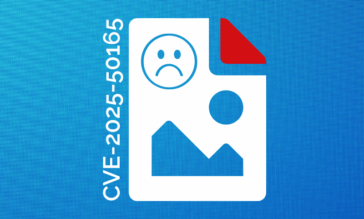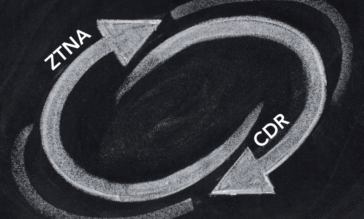How to Enable Safe File Handling for Clinical and Research Portals

Healthcare has opened a new digital front door. From electronic medical records (EMRs) and telemedicine platforms to research and collaboration portals, nearly every interaction now takes place in the browser. This shift has revolutionized patient care, enabling faster diagnoses, remote consultations, and seamless information sharing across clinical teams and research institutions. But with that convenience comes a quiet, growing risk.
Every time a clinician downloads a lab result, a patient uploads an insurance form, or a researcher exchanges datasets, a file crosses the network boundary. Each of those files carries two potential dangers: the hidden threat of malware and the equally serious risk of data exposure. A single infected document can compromise critical systems, while an unprotected record can lead to HIPAA violations, financial penalties, and loss of patient trust.
The challenge is that most of these risks are hidden in plain sight within everyday workflows that healthcare relies on. To truly protect patients and preserve continuity of care, security must evolve beyond reactive detection. The healthcare ecosystem needs files that are safe by design, not safe by assumption.
I. The Hidden Risk Behind Everyday Files
The greatest cybersecurity risks in healthcare rarely announce themselves; they arrive disguised as the ordinary. File handling has quietly become one of the most overlooked attack vectors in modern medicine. Every download, upload, and data exchange represents a point of contact where trust is assumed and verification is skipped. In an environment where every minute matters, that assumption can be costly.
Consider the everyday rhythm of clinical and research work. A lab technician downloads test results embedded with a malicious macro that activates once opened. A clinician uploads an insurance document laced with hidden ransomware code that spreads silently through shared drives. A research team collaborates on a dataset containing unmasked patient identifiers, unaware that sensitive information is now exposed to unauthorized systems. These aren’t hypothetical; they’re the kinds of breaches that happen when routine file exchanges intersect with sophisticated threat tactics.
The problem is that traditional defenses can’t keep up. Antivirus tools only catch what they recognize, leaving unknown or obfuscated malware undetected. Even browser isolation, while essential, can’t analyze or sanitize the actual contents of a file once it has been downloaded.
Attackers are aware of this, and they target healthcare organizations accordingly. Protected Health Information (PHI) has been estimated as 50 times more valuable than credit card data on the dark web, and when ransomware hits, it can average a full 21 days. Which is an eternity in clinical operations. The files healthcare organizations rely on to care for patients have become the same files attackers rely on to exploit them.
II. How the Browser Became a Primary Breach Vector
The browser has quietly become the new frontline of healthcare security. Where clinical operations once depended on desktop applications and secured internal networks, today’s workforce lives almost entirely online.
Attackers have adapted to this change. Instead of targeting hospital networks or endpoint devices directly, they now exploit the everyday actions that go beyond browser sessions. Uploading a patient’s scan, downloading a test report, or exchanging referral forms are now perfect entry points for malicious code. Each file transferred through a browser represents a potential infection vector or data exposure risk, often bypassing traditional perimeter defenses entirely.
The reality is clear: healthcare’s attack surface no longer stops at the firewall. It extends into every click, every upload, and every download that occurs within a web-based workflow. In a world where patient care is conducted online, security must follow suit. The focus can no longer be on securing the hospital network. It must be on securing every browser session that handles a file.
III. Layered Defense: Menlo + Votiro Working as One
Protecting healthcare’s digital workflows requires more than one layer of defense. It demands harmony between technologies that secure both the browser and the files moving through it. That’s where the acquisition of Votiro by Menlo Security creates a measurable impact. Each technology plays a distinct but complementary role in closing the browser-to-file threat gap.
Menlo isolates the enterprise’s browser of choice, creating a virtual barrier that separates users from the internet. Every web session runs in a secure, cloud-based environment, so even if an attacker tries to exploit a malicious link or script, the code never executes on the endpoint. This containment ensures that clinicians, staff, and researchers can safely access EMRs, insurance systems, and telemedicine platforms without fear of browser-based compromise.
Votiro’s sanitization technology extends that protection to the file level. Using next-gen Content Disarm and Reconstruction (CDR), the tech automatically sanitizes every file that crosses the browser boundary. The process removes malicious code, embedded scripts, and hidden payloads, then rebuilds a clean, fully functional version of the file in milliseconds. Users receive the same document they expect, just safe by design.
Now under the same banner, Menlo is able to deliver Zero Trust for both browsers and files. As always, Menlo Cloud stops web exploits before they can reach the user, while Menlo CDR (formerly Votiro CDR) ensures files entering the environment are free from hidden threats. It’s a seamless, layered defense that keeps healthcare organizations secure without slowing down the critical work of care delivery.
IV. How Next-gen CDR Goes Beyond File Blocking
Rather than try to detect threats, Menlo CDR assumes every file is suspicious until proven safe. Each file, whether it’s a lab report, insurance form, or diagnostic image, is broken down into its structural components, then rebuilt using a clean version from only known-good elements. This ensures that any hidden macros, scripts, or malicious payloads are removed before the file reaches the endpoint.
Meanwhile, macro-enabled templates continue to function as intended. DICOM images retain their full diagnostic fidelity. Reports, spreadsheets, and forms remain interactive and editable. All of this happens in real-time, with no quarantining, no blocking, and no manual review. Unlike lesser CDR solutions on the market that flatten or outright block files (and therefore productivity), clinicians and researchers protected by Menlo receive safe, fully usable files without interruption or delay.
Additionally, Menlo supports more than 220 file types, including PDFs, Office documents, compressed archives, password-protected files, and medical imaging formats. Whether a file is uploaded through a browser portal or shared between departments, it’s automatically sanitized and reconstructed before it can pose a risk.
V. Seamless Security, Clinical Continuity
In healthcare, security that slows care isn’t security at all. It’s another obstacle between clinicians and patients. Traditional defenses, such as sandboxes and quarantines, often introduce delays, false alarms, and manual review processes that frustrate users and prompt them to adopt risky workarounds. Every extra click or wait time compounds into lost productivity and, in some cases, delayed treatment.
Now backed by Votiro’s intelligent file sanitization, Menlo removes that friction entirely. Files open instantly and safely, even when shared through browser-based portals or third-party systems. IT teams spend less time chasing false positives, and compliance leaders gain confidence knowing that every file moving through the organization, whether inbound or outbound, is clean and compliant.
This is what modern healthcare security should look like: invisible, automated, and aligned with care delivery. Schedule a demo below to see how integrated browser isolation and file sanitization eliminate hidden threats, enabling safer, faster patient care and more secure collaboration across every clinical and research workflow.
News you can use
Stay up-to-date on the latest industry news and get all the insights you need to navigate the cybersecurity world like a pro. It's as easy as using that form to the right. No catch. Just click, fill, subscribe, and sit back as the information comes to you.
Sign-up Here!
Subscribe to our newsletter for real-time insights about the cybersecurity industry.



